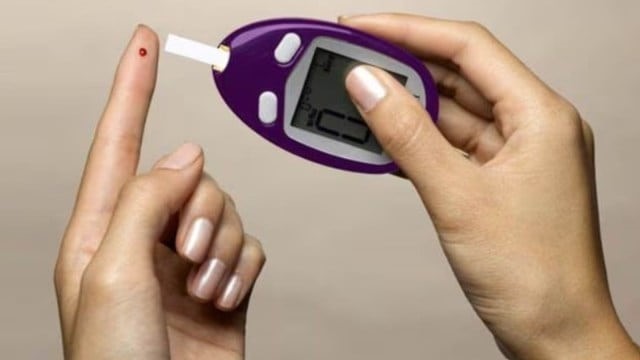Diabetes in India

- 11 Aug 2025
In News:
A Lancet Global Health study (2023), based on the Longitudinal Aging Study in India (LASI), has highlighted the alarming rise of diabetes among Indians aged 45 years and above. The findings underscore the urgent need for universal screening, awareness, and improved management strategies to address this public health challenge.
Key Findings of the Study
- Prevalence: One in five Indians aged 45+ (approx. 20%) had diabetes in 2019.
- Undiagnosed Diabetes: Nearly 40% of people with diabetes were unaware of their condition—around 20 million Indians remain undiagnosed.
- Treatment Gaps:
- 5% had untreated diabetes.
- 47% were under-treated.
- Only 36% were adequately treated.
- Awareness and Treatment: Once aware, 94% of patients sought treatment, highlighting the impact of diagnosis.
- Control Rates:
- 46% achieved blood sugar control,
- 59% achieved blood pressure control,
- 6% used lipid-lowering medicines.
- Urban-Rural Divide: Urban prevalence (30%) was nearly double that of rural areas (15%).
- Gender Gap: Prevalence was similar in men (19.6%) and women (20.1%).
- Regional Trends:
- Highest rates: Chandigarh (36.9%), Kerala (36%), Puducherry (36%).
- Largest number of diabetics: Tamil Nadu (6.1 mn), Maharashtra (5.8 mn), Uttar Pradesh (4.7 mn).
- Methodology: Diagnosis based on HbA1c testing (3-month blood sugar average), more accurate than random glucose tests used in earlier surveys.
Understanding Diabetes
- Type 1: Autoimmune; body destroys insulin-producing cells. Requires lifelong insulin.
- Type 2: Accounts for 95%+ of cases; due to insulin resistance or inadequate production; linked to obesity, sedentary lifestyle, and genetics. Preventable via lifestyle changes.
- Gestational Diabetes: Occurs during pregnancy; increases risk of complications and later Type 2 diabetes.
- Type 5 (Newly Recognized): Seen in lean adolescents (BMI < 18.5 kg/m²); caused by malnutrition damaging pancreatic beta cells, leading to insulin deficiency.
India’s Policy and Programmatic Response
- Ayushman Arogya Mandirs (Health and Wellness Centres): Provide population-based diabetes screening.
- Fit India Movement: Encourages preventive health and fitness practices.
- School Interventions: CBSE mandates ‘sugar boards’ to educate students about hidden sugars and health risks.
- National Programme for Prevention and Control of Cancer, Diabetes, Cardiovascular Diseases and Stroke (NPCDCS): Strengthens NCD screening and management across primary healthcare.
